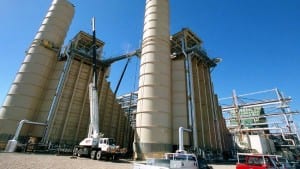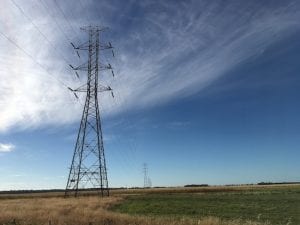Australian households are about to be slugged with a major increase in their energy costs – driven higher by surging coal prices – with the Australian Energy Regulator announcing a double-digit percentage increase in the benchmark electricity price for some states.
The AER published its latest default market offer determination on Thursday, which finds higher coal and gas costs will leave consumers paying much more for their electricity.
The default market offer for consumers in New South Wales will increase by between 8.5 and 14.1 per cent, while households in south-east Queensland will see benchmark electricity prices rise by 11.3 per cent.
The average New South Wales consumer will pay between $119 to $227 more in annual electricity costs, while the increase for south-east Queensland and South Australian consumers will be $165 and $124, respectively.
Electricity prices have been driven higher by a surge in the underlying wholesale electricity price, which has increased sharply since the start of the year off the back of a spike in the cost of coal and gas.
The AER also pointed to outages at large coal and gas generators – such as the recent outage at AGL’s Loy Yang A power station – as contributing to higher wholesale electricity prices, which have risen by 41.4 per cent in New South Wales, by 49.5 per cent in Queensland, and by 11.8 per cent in South Australia.
It has already taken a toll on small energy retailers, with two collapsing and having their licences revoked as the AER invokes its “retailer of last resort” mechanism for the first time in three years, and switching customers to bigger utilities. There are fears more energy retailers could follow.
Chair of the AER, Clare Savage, said the regulator was required to set a price that allowed electricity retailers to recoup the cost of supplying power to consumers.
“Setting the DMO is not about setting the lowest price. We are required to set a price that will allow retailers to recover their costs, earn a reasonable margin and support retailers to compete and offer better deals and products in a competitive retail environment,” Savage said.
“If a large number of retailers are unable to recover their costs and are forced to exit the market – as we have seen recently in the United Kingdom – that will add more cost to consumers.”
Savage urged electricity customers to shop around.
Parts of Australia with higher renewable energy use are likely to see electricity price increases occur at a slower rate, with South Australia’s default market offer set to increase by 7.2 per cent. The Victorian default offer, set earlier this week, pointed to a 5 per cent increase in electricity prices.
The default market offer set by the AER establishes an effective price cap for electricity users on standing offer contracts. It was introduced as a way to avoid customers becoming stuck on exorbitant electricity tariffs by failing to shop around for cheaper offers.
Around 10 per cent of residential customers and 20 per cent of small business customers are on ‘standing offers’ subject to the default market offer, while other customers will have their electricity prices set in reference to the default offer.
Around 550,000 households and 92,000 small businesses are paying the default market offer.
The latest default price determination published on Thursday shows electricity prices rising fastest in states with a greater dependence on black coal.
Global events, including the Russian invasion of Ukraine and the emergence of global inflationary pressures, have pushed fossil fuel prices to near all-time highs, and AER’s latest determination shows the effects of higher fuel costs flowing through to electricity prices.
Chief executive officer of Energy Consumers Australia, Lynne Gallagher, said the electricity price increases would be a concern for households already facing cost of living pressures and called on retailers to offer support to customers.
“Winter is almost upon us and, with it, the need for many Australian households and small businesses to increase their energy use at certain times to keep themselves warm, comfortable and healthy,” she said.
“These price rises arrive at the worst possible time, but consumers need not feel helpless in the face of rising bills. There are things they can do to reduce their bill and there are resources available to guide them through it.
“We’d like to see retailers being more proactive in reaching out to their customers and offering them a better deal rather than waiting for consumers to call and ask for one.”
The release of the default market offer determination was the subject of one of the last controversial acts of outgoing federal energy minister Angus Taylor, who moved to delay the news of rising electricity prices to until after the federal election.
While Taylor has denied the delay was for political reasons, it was a convenient outcome for a Morrison government that had campaigned heavily on the premise that it had kept electricity prices lower, saying it had achieved a goal to keep wholesale electricity prices below $70 per megawatt-hour.
However, the 2021-22 financial year has seen wholesale electricity prices in New South Wales average more than $110 per megawatt-hour, and prices have averaged more than $150 per megawatt-hour in Queensland – prices significantly higher than when the Labor Gillard government’s carbon price was in place.
The outgoing Morrison government consistently maintained that the increased use of coal and gas in Australia’s electricity system was necessary to lower electricity prices.
The latest benchmark electricity prices set by the AER show that the parts of Australia most heavily reliant on black coal are now facing the largest electricity price increases.









